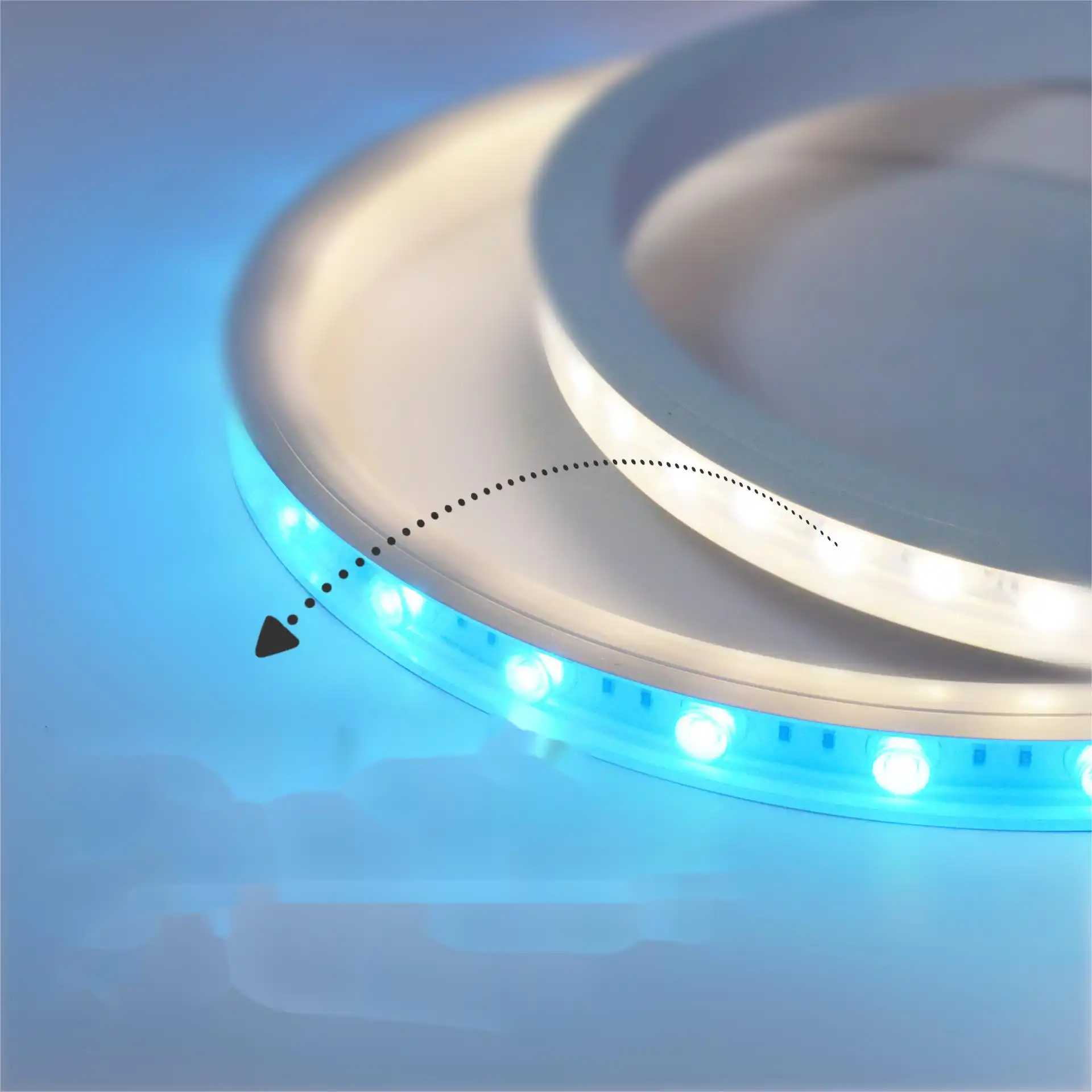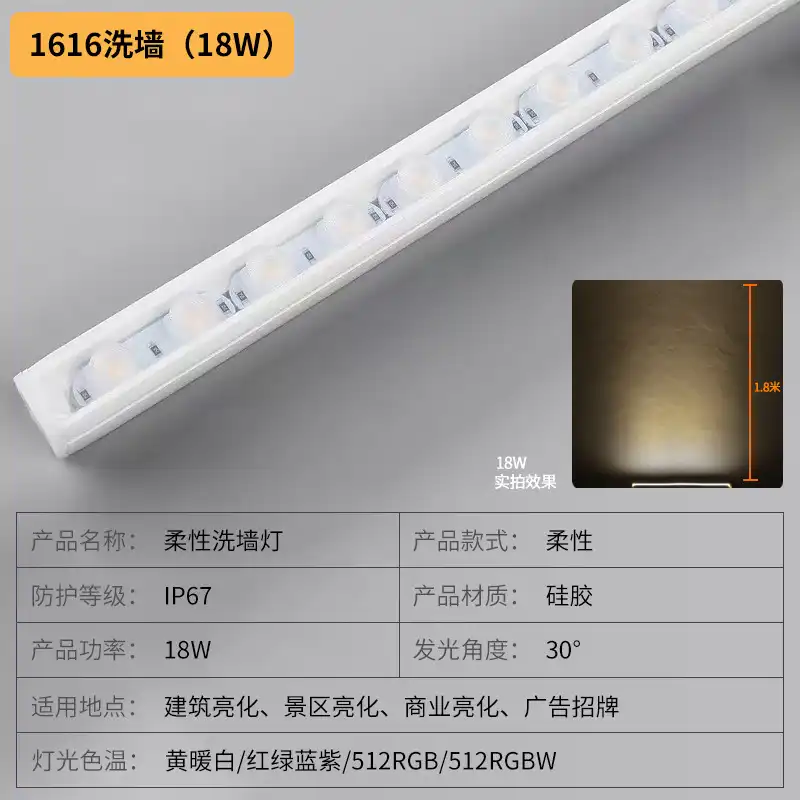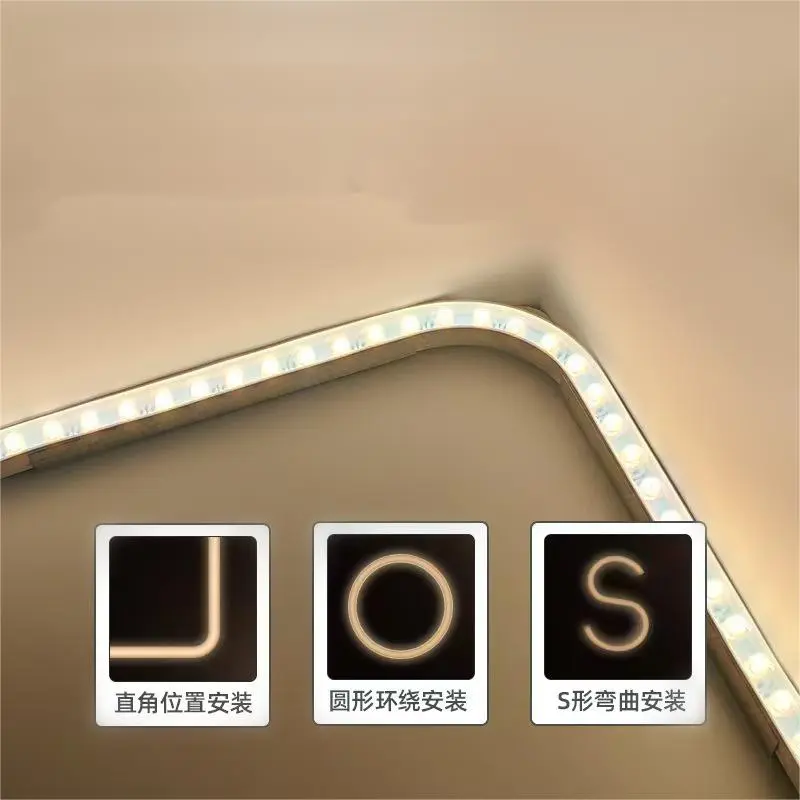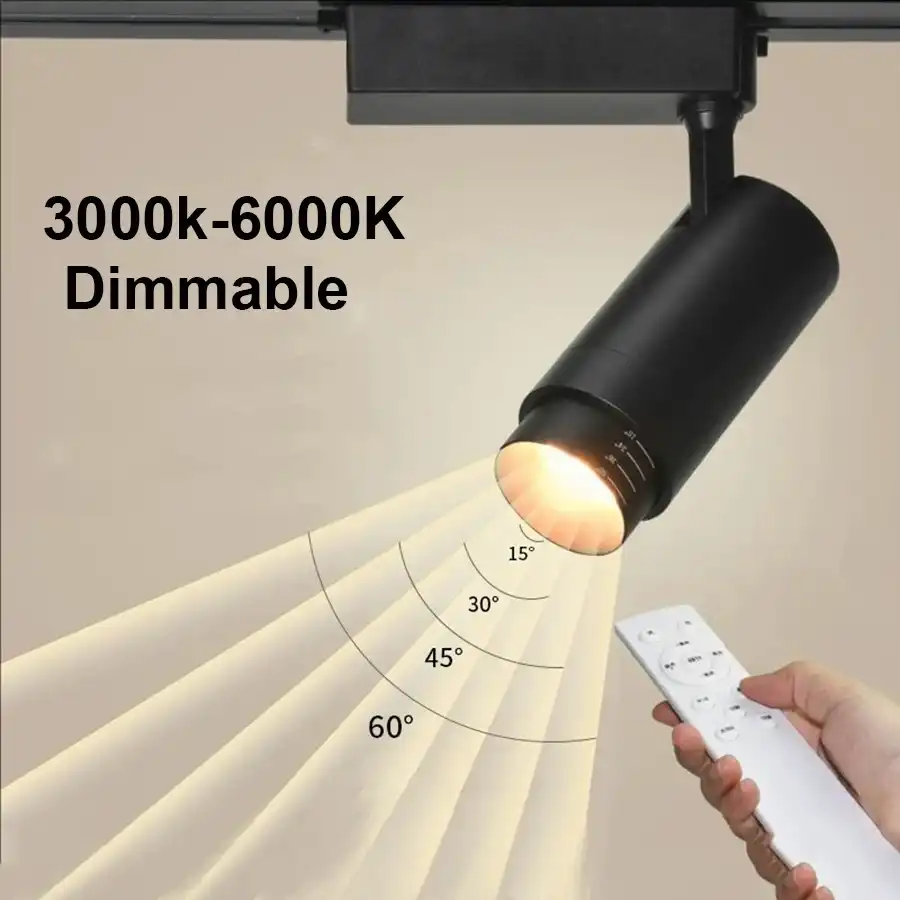The Components of Lens-Optic LED Strip Lights
LED Chips: The Heart of Illumination
At the core of lens-optic LED strip lights are the LED chips themselves. These semiconductor devices are responsible for converting electrical energy into light through a process called electroluminescence. Modern LED chips are designed to be highly efficient, long-lasting, and capable of producing a wide range of color temperatures and intensities.
The quality of the LED chips used in lens-optic strip lights plays a crucial role in determining the overall performance of the lighting system. High-quality LEDs offer better color rendering, increased energy efficiency, and longer lifespans. Manufacturers like USKYLED prioritize the use of premium LED chips to ensure optimal lighting performance and durability.
Optical Lenses: Shaping and Directing Light
The distinguishing feature of lens-optic LED strip lights is, of course, the optical lenses. These lenses are typically made from high-quality, transparent materials such as polycarbonate or PMMA (acrylic). The design of these lenses is a result of advanced optical engineering, with each lens carefully crafted to achieve specific light distribution patterns.
Optical lenses serve several important functions in lens-optic LED strip lights:
- Focusing the light output: By concentrating the light emitted by the LEDs, lenses can significantly increase the perceived brightness of the strip light.
- Controlling beam angles: Different lens designs can create narrow, medium, or wide beam angles, allowing for versatile lighting applications.
- Reducing glare: Well-designed lenses can minimize unwanted glare, creating a more comfortable lighting environment.
- Improving light uniformity: Lenses help distribute light more evenly along the length of the strip, reducing hot spots and dark areas.
PCB and Circuitry: The Foundation of Functionality
The printed circuit board (PCB) and associated circuitry form the backbone of lens-optic LED strip lights. The PCB provides a stable platform for mounting the LED chips and lenses while also facilitating the electrical connections necessary for powering the LEDs.
In high-quality lens-optic LED strip lights, the PCB is designed to efficiently dissipate heat, which is crucial for maintaining the longevity and performance of the LEDs. Some advanced designs incorporate additional heat-dissipating materials or structures to further enhance thermal management.
The circuitry on the PCB may also include additional components such as resistors or constant current drivers to ensure stable and consistent operation of the LEDs. In some cases, integrated circuits (ICs) may be included to enable features like dimming or color-changing capabilities.

The Science Behind Lens-Optic LED Strip Light Performance
Optical Physics and Light Manipulation
The effectiveness of lens-optic LED strip lights is rooted in the principles of optical physics. When light passes through a lens, it undergoes refraction – a change in direction due to the difference in refractive indices between the lens material and the surrounding air. By carefully designing the shape and curvature of the lens, engineers can control how light is bent and redirected.
In lens-optic LED strip lights, this principle is applied to achieve specific lighting outcomes:
- Total Internal Reflection (TIR): Some lens designs utilize TIR to capture and redirect light that would otherwise be lost, improving overall efficiency.
- Collimation: Lenses can be shaped to collimate light, creating parallel beams that are ideal for accent lighting or highlighting specific areas.
- Diffusion: Certain lens designs incorporate micro-structures that help diffuse light, creating a softer, more even illumination.
Color Temperature and CRI Considerations
While the optical lenses primarily focus on light distribution, the inherent properties of the LED chips themselves play a crucial role in determining the quality of light produced. Two key factors to consider are color temperature and Color Rendering Index (CRI).
Color temperature, measured in Kelvin (K), describes the warmth or coolness of the light. Lens-optic LED strip lights are available in a range of color temperatures, typically from warm white (2700K-3000K) to cool white (5000K-6500K). The choice of color temperature can significantly impact the ambiance and functionality of a space.
CRI is a measure of how accurately a light source renders colors compared to natural sunlight. High-quality lens-optic LED strip lights, like those produced by USKYLED, often feature CRI values of 90 or above, ensuring that colors appear vibrant and true-to-life under their illumination.
Energy Efficiency and Heat Management
One of the key advantages of LED technology is its energy efficiency, and lens-optic LED strip lights take this a step further. By focusing and directing light more effectively, these strips can achieve desired illumination levels with lower power consumption compared to traditional lighting solutions.
However, it's important to note that even efficient LEDs generate some heat. Proper heat management is crucial for maintaining performance and longevity. High-quality lens-optic LED strip lights incorporate various heat dissipation techniques:
- Thermal management PCBs with enhanced heat-spreading capabilities
- Use of thermally conductive materials in the construction of the strip
- Optimized LED spacing to prevent heat buildup
- Integration with heat sinks or mounting surfaces that aid in heat dissipation
Effective heat management not only prolongs the life of the LEDs but also helps maintain consistent color output and brightness over time.

Applications and Advantages of Lens-Optic LED Strip Lights
Versatility in Lighting Design
Lens-optic LED strip lights offer unparalleled versatility in lighting design, making them a favorite among architects, interior designers, and lighting professionals. Their slim profile and flexible nature allow for creative installations in a wide range of settings:
- Architectural accent lighting: Highlighting building features, cornices, or alcoves
- Under-cabinet lighting: Providing task illumination in kitchens and workspaces
- Cove lighting: Creating soft, indirect ambient lighting in residential and commercial spaces
- Display lighting: Enhancing retail displays and showcases
- Outdoor lighting: Illuminating pathways, landscapes, and building exteriors
The ability to choose from various beam angles and color temperatures allows designers to tailor the lighting to specific needs and aesthetics. Narrow beam angles can create dramatic spotlighting effects, while wider angles provide more uniform area illumination.
Energy Savings and Sustainability
As energy efficiency becomes increasingly important in both residential and commercial settings, lens-optic LED strip lights offer significant advantages. Their high efficacy (lumens per watt) means they can provide ample illumination while consuming less power than traditional lighting sources.
This energy efficiency translates to tangible benefits:
- Lower electricity costs for end-users
- Reduced carbon footprint and environmental impact
- Compliance with energy efficiency standards and green building certifications
- Less frequent replacement, reducing waste and maintenance costs
Many lens-optic LED strip lights are also dimmable, allowing for further energy savings by adjusting light levels based on time of day or occupancy.
Integration with Smart Lighting Systems
The advent of smart home and building automation systems has opened up new possibilities for lighting control, and lens-optic LED strip lights are well-positioned to take advantage of these innovations. Many modern strip lights can be integrated with smart lighting systems, offering features such as:
- Remote control via smartphone apps or voice assistants
- Programmable schedules and scenes for automated lighting control
- Color-changing capabilities for dynamic lighting effects
- Integration with sensors for occupancy-based lighting control
- Compatibility with building management systems for large-scale implementations
These smart features not only enhance convenience but also contribute to energy savings by ensuring lights are only on when needed and at appropriate intensity levels.

Conclusion
Lens-optic LED strip lights represent a significant advancement in lighting technology, offering a perfect blend of form and function. By combining efficient LED chips with precision-engineered optical lenses, these lighting solutions provide enhanced control over light distribution, improved energy efficiency, and versatile design options.
As the lighting industry continues to evolve, lens-optic LED strip lights are poised to play an increasingly important role in both residential and commercial lighting applications. Their ability to deliver high-quality, focused illumination while minimizing energy consumption aligns perfectly with the growing demand for sustainable and aesthetically pleasing lighting solutions.
For lighting professionals, designers, and end-users alike, understanding the principles behind lens-optic LED strip lights can lead to more informed choices and innovative lighting designs. As technology advances, we can expect to see even more refined and capable lens-optic LED solutions, further revolutionizing the way we illuminate our spaces.
FAQ
Are lens-optic LED strip lights more expensive than regular LED strips?
Initially, lens-optic LED strips may have a higher upfront cost due to their advanced technology. However, their improved efficiency and longevity often result in lower long-term costs.
Can lens-optic LED strip lights be cut to size?
Many lens-optic LED strips can be cut at designated points, but it's essential to check the manufacturer's specifications to ensure proper functionality after cutting.
How long do lens-optic LED strip lights typically last?
High-quality lens-optic LED strips can last 50,000 hours or more, depending on usage and environmental conditions.
Experience the Brilliance of Lens-Optic LED Strip Lights | USKYLED
At USKYLED, we're proud to offer cutting-edge lens-optic LED strip lights that combine advanced technology with superior design. As a leading manufacturer and exporter, we provide custom OEM/ODM solutions tailored to your specific lighting needs. Our commitment to sustainability and energy efficiency ensures that you're not just getting top-quality illumination, but also contributing to a greener future. Experience the USKYLED difference in your next lighting project. Contact our expert team at sales@uskyled.com to discover how our lens-optic LED strip light factory can illuminate your space with unparalleled brilliance and efficiency.
References
1. Johnson, E. (2022). "Advancements in Lens-Optic LED Technology for Strip Lighting Applications". Journal of Lighting Engineering, 45(3), 112-128.
2. Smith, A. & Brown, T. (2021). "Optical Physics in Modern LED Strip Light Design". Applied Optics Quarterly, 18(2), 67-82.
3. Lee, S. et al. (2023). "Energy Efficiency Comparison of Various LED Strip Light Technologies". Energy and Buildings, 230, 110537.
4. Garcia, M. (2022). "Smart Integration of Lens-Optic LED Strip Lights in Home Automation Systems". IEEE Transactions on Consumer Electronics, 68(4), 398-407.
5. Wong, H. & Patel, R. (2021). "Thermal Management Strategies for High-Performance LED Strip Lights". International Journal of Heat and Mass Transfer, 168, 120858.



![What is Dimmable Track Lighting for Museum: Best Guide [2025]](/icms/upload/0d08cc601e7611f0b542b3ca0c0f4a83/pic/knowledgemanager-knowledgepic/e7879f32605f11f081911f363b8c1ed0/Directory/20250717 dimmable track lighting -1(1)_1752739217941.webp)

